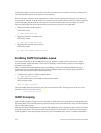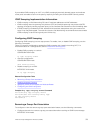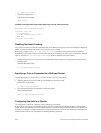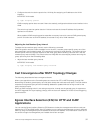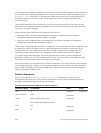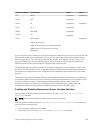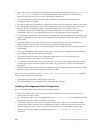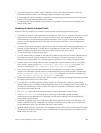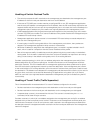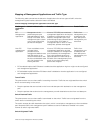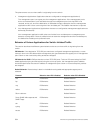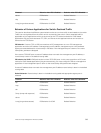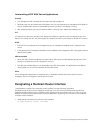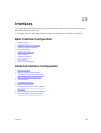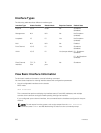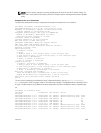Handling of Switch-Destined Traffic
• The switch processes all traffic received on the management port destined to the management port
IP address or the front-end port destined to the front-end IP address.
• If the source TCP/UDP port number matches a configured EIS or non-EIS management application
and the source IP address is a management Port IP address, then the EIS route lookup is done for the
response traffic and hence is sent out of the management port. In this case, the source IP address is a
management port IP address only if the traffic was originally destined to the management port IP.
• ICMP-based applications like ping and traceroute are exceptions to the preceding logic since we do
not have TCP/UDP port number. So if source IP address of the packet matches the management port
IP address EIS route lookup is done.
• Management application packet counter is incremented if EIS route lookup succeeds and packet is
sent out of the management port.
• If route lookup in the EIS routing table fails or if the management port is down, then packets are
dropped. The management application drop counter is incremented.
• Whenever IP address is assigned to the management port, it is stored in a global variable in the IP
stack, which is used for comparison with the source IP address of the packet.
• Rest of the response traffic is handled as per existing behavior by doing route lookup in the default
routing table. So if the traffic is destined to the front-end port IP address, the response is sent out by
doing a route lookup in the default routing table, which is an existing behavior.
Consider a sample topology in which ip1 is an address assigned to the management port and ip2 is an
address assigned to any of the front panel port. A and B are end users on the management and front-
panel port networks. The OS-initiated traffic for management applications takes a preference for ip1 as
source IP and uses the management network to reach the destination. If the management port is down
or the route lookup in EIS routing table fails, ip2 is the source IP and the front-panel port is used to reach
the destination. The fallback route between the management and data networks is used in such a case. At
any given time, end users can access Dell Networking OS applications using either ip1 or ip2. Return
traffic for such end-user-originated sessions destined to management port ip1 is handled using the EIS
route lookup.
Handling of Transit Traffic (Traffic Separation)
This is forwarded traffic where destination IP is not an IP address configured in the switch.
• Packets received on the management port with destination on the front-end port is dropped.
• Packets received on the front-end port with destination on the management port is dropped.
• A separate drop counter is incremented for this case. This counter is viewed using the netstat
command, like all other IP layer counters.
Consider a scenario in which ip1 is an address assigned to the management port and ip2 is an address
assigned to any of the front panel port of a switch. End users on the management and front panel port
networks are connected. In such an environment, traffic received in the management port destined on
the data port network is dropped and traffic received in the front-end port destined on the management
network is dropped.
382
Internet Group Management Protocol (IGMP)



